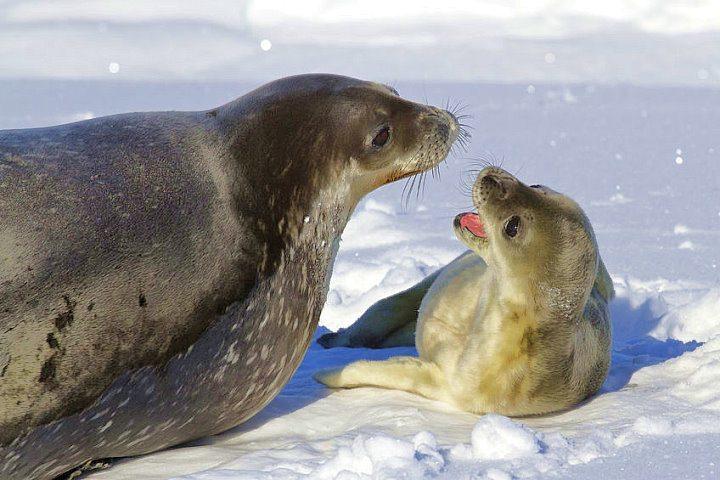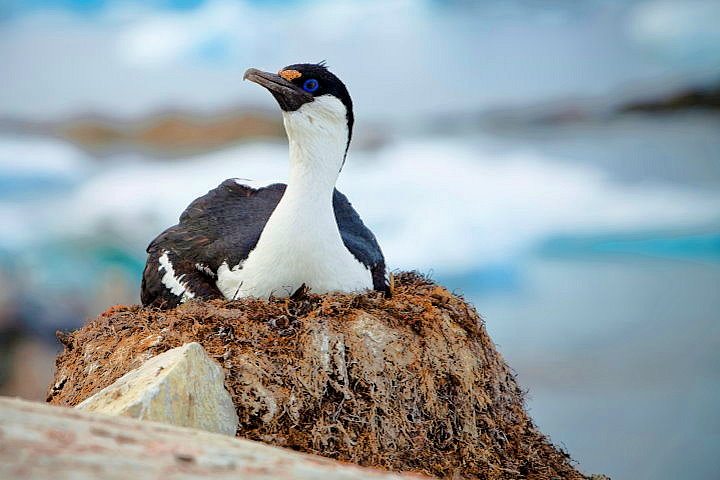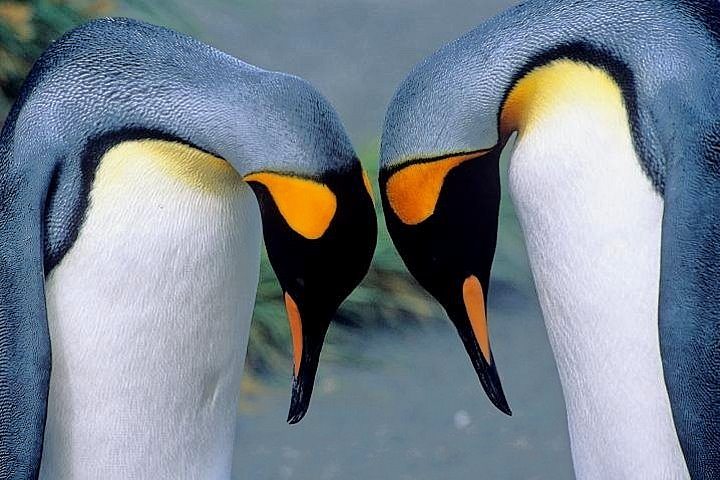
Chinstrap Penguin
In Antarctica, the “White Continent” at the bottom of the earth, humans – mostly scientists and support personnel working at the research stations there – come and go after a few months or years. None are permanent residents.
But Antarctica does have millions of annual residents: its wildlife. And they are some of the biggest draws for cruise passengers who venture each year to the world’s coldest, most remote continent.
Penguins, whales, seals, and seabirds are the main attractions, and on a typical Antarctica cruise you’re likely to see them all. But it depends on when you travel and where you go which species you’ll encounter, and which activities you’re most likely to witness.
Keep in mind that the peak Antarctic tourist season is December through February, which is summer there and less icy. The entire Antarctic tourist season runs from late October through early April; depending on ice conditions, it may be a bit shorter.
On sea tours leaving from South America, the most common destinations are the Antarctic Peninsula and the South Shetland Islands, both part of Antarctica itself. Many tours also include South Georgia Island and the Falkland Islands; while neither are actually part of Antarctica, they’re still rich in wildlife.
Here are the main species you’re likely to encounter throughout the region:
Penguins, Penguins, Penguins
Start with penguins, which are probably Antarctica’s most iconic creatures. While penguins (which can’t fly) spend most of their lives at sea, they waddle ashore to breed and give birth.
If you’re interested in seeing baby penguins, it’s generally best to go from December to February. One of the most riveting sights is watching the young penguins chasing after nearby adults, begging for food. (December and January also have the most daylight hours in Antarctica, making them ideal for photographers.)
The continent’s most common penguin species are Chinstraps, which typically breed in October and November and give birth in January and February.
Emperor penguins, much less common, breed and give birth in the Antarctic winter. They mostly live in the often frozen Weddell Sea to the east of the peninsula, which requires a helicopter ride, weather permitting. Emperor penguins also inhabit a remote area on the other side of the continent.
Other penguin species on the continent include the Adele, which breed in September and October and give birth in December; and the less common Gentoo, which have a similar breeding and birthing pattern as the Adele. Nearby islands harbor a number of other penguin species as well.
Having given birth, most adult penguins head out to sea by March, but sightings of whales and seals may well increase that month.

Weddell Seal and Pup
Whales and Seals
The most common whale species in Antarctica are sperm whales, minkes and Orcas. Less common are humpbacks, fins, southern rights, and blue whales — the earth’s largest mammals. To spot whales, watch for what look like small puffs of smoke in the water – they’re likely to surface soon after.
Most whales journey long distances from their more northerly breeding grounds to feed in Antarctic waters in the region’s warmer months, dining mainly on krill, fish, and squid. The entire Antarctic region is now a protected zone for whales, with some species, such as southern rights, having been hunted to near extinction decades ago.
The continent is rich in seal life as well. Like penguins, they spend much of their life in the water, but breed on land. They prefer the coastal shores of the continent and nearby islands, making them easy to spot.
Both fur seals and their much larger cousins, elephant seals, are very aggressive during mating season, but this activity usually predates the tourist season. Elephant seals give birth, though, from December to February, a prime viewing time.
The most common seal species by far are the crabeaters, which breed from September through November and give birth in January-February. Fur seals, though numbering around four million today, were hunted extensively for their fur by early explorers and are now protected by international law. They breed in November and December and give birth from November through January.
Other seal species — Leopard seals, Ross seals, and Weddell seals — are much less common.

Albatross
Abundant Birdlife
Antarctica is also a bonanza for birders, with about 20 breeding species numbering millions of seabirds giving birth along the coast and offshore islands. Breeding occurs mainly during the Antarctic summer, before the birds fly north for the winter – all making for excellent viewing conditions.
The most common species you’re likely to see are albatrosses – with their enormous wingspreads, they can fly several hundred miles a day – as well as Antarctic fulmars and gulls. You may also spot snow petrels, cormorants, and sheathbills – all part of the wondrous world of Antarctic wildlife.
Recommended Tours
Don't Forget to Share This Post!

Clark Norton is a Tucson, Arizona-based travel writer who has visited 120 countries and seven continents. He blogs about travel at clarknorton.com.
Hand-Picked Related Posts
The Best Places to Visit on an Antarctic Cruise
10 Cool Facts About The Penguins Of Antarctica
8 Cool Facts About The Seals Of Antarctica
Following In The Footsteps Of Antarctica Explorer Ernest Shackleton
A Brief History Of Antarctic Exploration
A Brief History Of Patagonia Exploration







